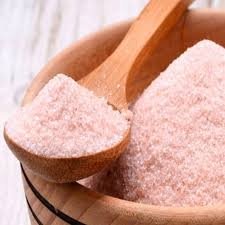
The Wonders of Indhuppu Podi: A Culinary Gem from South India
Indhuppu Podi, also known as “Salt Powder,” is a staple seasoning blend hailing from South Indian cuisine. This versatile and flavorful mix not only enhances the taste of various dishes but also carries a wealth of cultural significance and health benefits. In this blog, we will explore the origins, preparation, uses, and benefits of Indhuppu Podi, showcasing why it deserves a prominent place in your kitchen.
What is Indhuppu Podi?
Indhuppu Podi is a traditional South Indian condiment made primarily from rock salt, with the addition of various spices, lentils, and sometimes dried herbs. The word “Indhuppu” translates to “salt” in Tamil, and “Podi” means “powder.” Together, they signify a powder made from salt and other flavorful ingredients.
The basic recipe typically includes rock salt, black sesame seeds, and dried red chilies, ground together to create a coarse powder. Variations may include the addition of ingredients like asafoetida (hing), garlic, or curry leaves, depending on regional preferences. The result is a flavorful, aromatic blend that can elevate any dish.
The Origins of Indhuppu Podi
Indhuppu Podi has deep roots in the culinary traditions of South India, particularly among Tamil households. Its history dates back centuries, with families creating their unique versions of this essential seasoning. Traditionally, it was made in small batches at home, using a stone mortar and pestle, a practice that adds to its rustic charm.
The use of salt as a flavor enhancer can be traced back to ancient civilizations, but the specific blend of spices and lentils in Indhuppu Podi has evolved over time, influenced by regional agricultural practices and local tastes. Today, Indhuppu Podi is not only a household staple but also a beloved accompaniment to various South Indian dishes.
Culinary Uses of Indhuppu Podi
Indhuppu Podi is incredibly versatile and can be used in various ways:
As a Dipping Powder: One of the most popular ways to enjoy Indhuppu Podi is as a dipping powder for idli and dosa. Simply mix it with a bit of sesame oil for a flavorful accompaniment.
Seasoning for Vegetables: Sprinkle Indhuppu Podi over sautéed or steamed vegetables for an extra burst of flavor. It works particularly well with greens like spinach and mustard leaves.
Marinades:Incorporate Indhuppu Podi into marinades for meats or tofu, infusing them with a delicious salty-spicy kick.
Soups and Stews: Add a teaspoon or two to soups and stews to enhance their flavor profile.
Rice Dishes: Mix it into rice preparations, such as lemon rice or coconut rice, for added depth of flavor.
Health Benefits of Indhuppu Podi
While Indhuppu Podi is primarily known for its flavor, it also offers several health benefits:
Natural Minerals: Rock salt, the main ingredient, contains essential minerals like potassium, magnesium, and calcium, which are vital for various bodily functions.
Digestive Aid: The spices in Indhuppu Podi, such as asafoetida and black sesame seeds, are known for their digestive properties. They can help alleviate bloating and promote healthy digestion.
Anti-Inflammatory Properties: Ingredients like dried red chilies contain capsaicin, which has anti-inflammatory effects. This can help reduce inflammation in the body.
Antioxidant-Rich:The spices used in Indhuppu Podi are rich in antioxidants, which help combat oxidative stress and support overall health.
Conclusion
Indhuppu Podi is more than just a seasoning; it’s a celebration of South Indian culinary tradition. Its rich flavors, simple preparation, and health benefits make it an essential addition to any kitchen. Whether you’re enjoying a traditional meal or experimenting with new recipes, Indhuppu Podi can elevate your dishes and bring a touch of authenticity to your table.
As you explore the world of South Indian cuisine, don’t forget to include this unique and versatile salt powder in your culinary repertoire. With its deep flavors and cultural significance, Indhuppu Podi is sure to become a cherished ingredient in your cooking journey.
